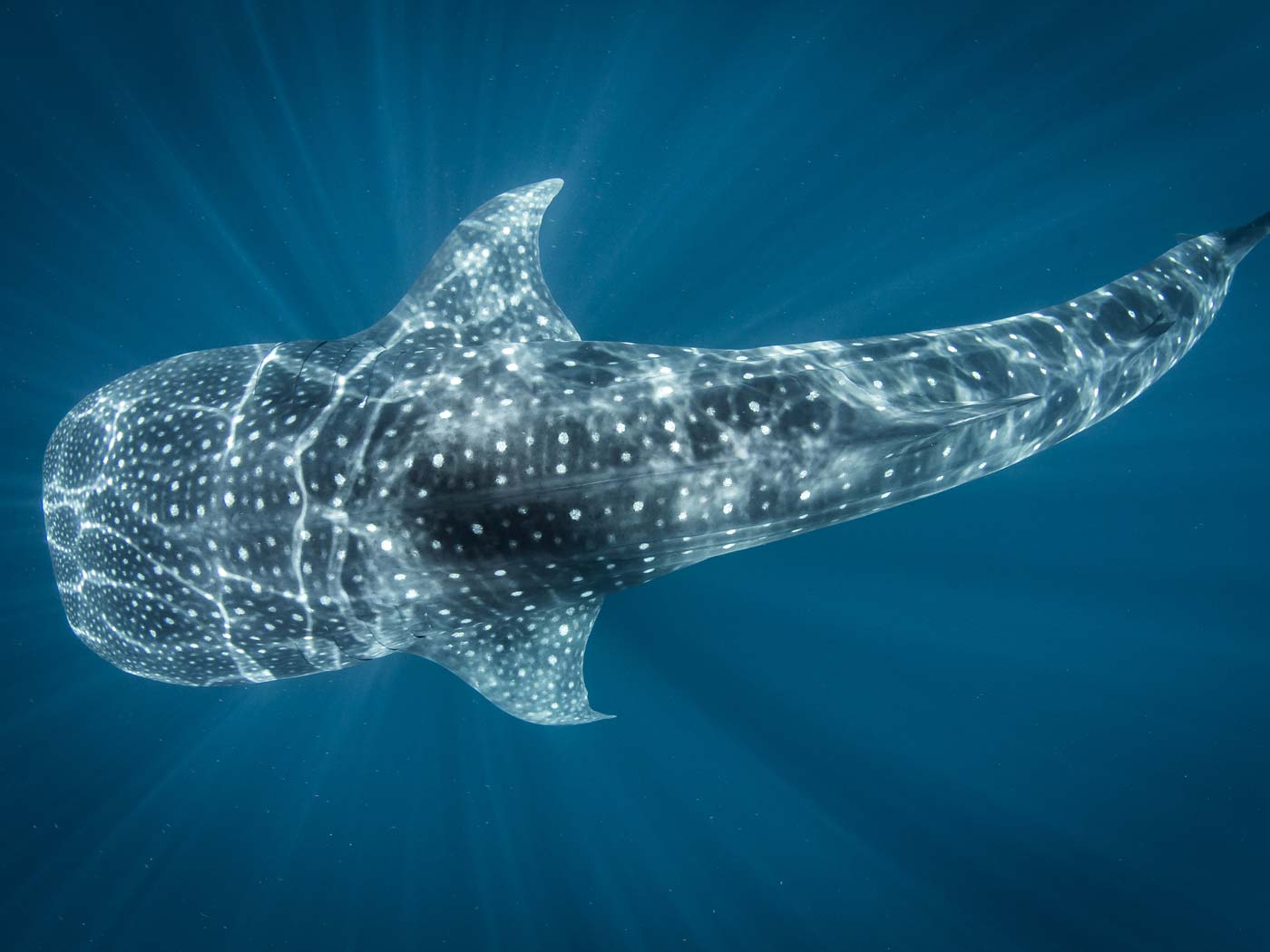Whale sharks truly set themselves apart from the rest of the rest of the pack with their graceful open-mouthed filter feeding technique and beautiful patterned top sides. These gentle giants grow up to about 60 feet (18m) long and are generally found in warm, tropical waters.
Where
Just about all oceans, but only as a chance encounter. Most of the whale shark images you see these days are taken at an aggregation. The most famous aggregation occurs offshore of Isla Mujeres, Mexico, in the summer. One thing that makes this aggregation so popular for photographers is that the eggs the whale sharks come to feed on are so small that they don't cloud the water. These settings are for a sunny summer day in Mexico or the shallow feeding stations of Yap.
There are night dives in Hawaii, and deeper waters where they are photographed (Socorro) which would require different settings.
DSLR + Mirrorless
ISO: 200-400
Mode: Tv Shutter Priority
This choice may sound odd for the experienced photographer used to shooting M Manual. Certainly Manual will work, but there are some things to keep in mind. First, you are not permitted to take a flash (strobe) with you. This is actually OK because the strobe would create additional drag and slow you down, and we are (again, by law) snorkeling! There is a lot of light to use. Whalesharks don't swim very fast, particularly in a feeding aggregation, so 1/125th-250th second will freeze their movement without motion blur. We like shutter priority because it allows us to pay attention to our composition without worrying about settings.
Aperture: Variable through whole range- remember that we are shooting super wide lenses, so depth of field is huge, even at more open Apertures. If you shoot TV you will relinquish control of this variable and let the camera choose it based on the light.
Shutter Speed: 1/125-1/160
Lens: 8mm to 50mm, super-wide fisheye lenses work well here.
Point + Shoot
ISO: 100 to 200
Mode: M Manual or Av Aperture Priority
Aperture: Full range depending on sun in your frame
Shutter Speed: 1/125 to 1/200
Lens: Full wide angle with or without a wide angle wet lens
Technique
Get close and shoot up. Wait for close passes and shoot while the whale shark is approaching.
Pro Tip: Pay attention to the position of the sun. You can use the sun to create dramatic lighting and silhouettes by shooting towards it, but the best overall detail is achieved by having the sun behind you (over your shoulder).
Strobes
In Isla Mujeres strobes are forbidden. If you are shooting elsewhere (Yap etc.) remember that the white belly will easily over expose- these guys are big, so use long strobe arms and stretch them out far.













